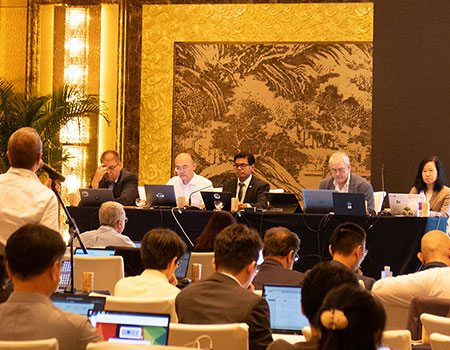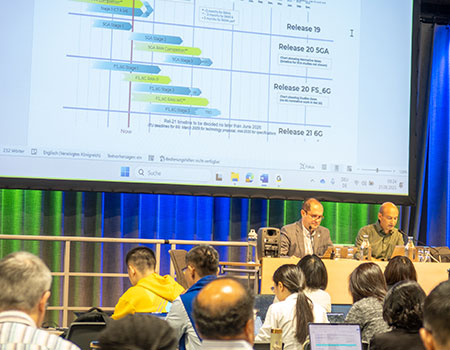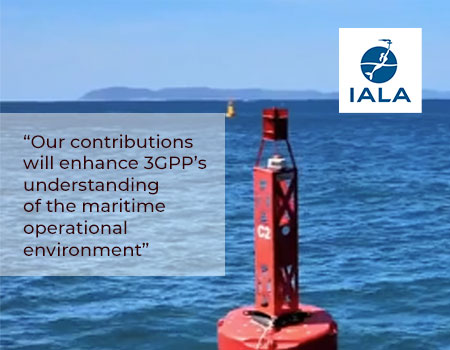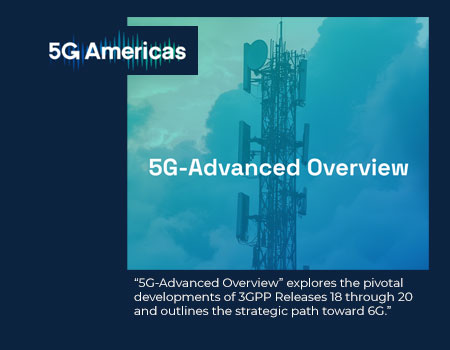By Puneet Jain, 3GPP Working Group SA2 Chair
First published Oct. 2022, in Highlights Issue 05
Technical Specification Group SA Working Group 2 (SA2) is in charge of developing the overall 3GPP system architecture and services including User Equipment, Access Network, Core Network, and IP Multimedia Subsystem. The group has a system-wide view and defines the main entities of the system architecture, and how these entities are linked to each other, it also defines the main functionality and the information exchange between these entities.
Rel-18 is the first release for 5G-Advanced. SA2 kicked off Rel-18 Stage-2 work in Feb 2022, immediately following the Rel-18 content definition and prioritization at SA#94-e meeting in December 2021. Some Rel-18 study items are based on new requirements, while other study items are a result of unfulfilled Rel-17 requirements that require further work.
Study items based on new Rel-18 requirements
- Study on 5G System with Satellite Backhaul (FS_5GSATB, TR 23.700-27): The Rel-18 study aims at further enhancements for 5GS support for satellites, with a specific focus on backhaul with changing delay, as well as support for UPF deployed on GEO satellite with gNB on the ground.
- Study on Personal IoT Networks (FS_PINS, TR 23.700-88): study aims to support Personal IoT Network (PIN) with requirements captured in 3GPP TS 22.261 such as PIN Element discovery, PIN Element’s capability discovery, PIN element availability and reachability, PIN management, access of PIN via PIN Element with Gateway Capability (PEGC), and communication of PIN Element with other PIN Elements.
- Study on Ranging based services and sidelink positioning (FS_Ranging_SL, TR 23.700-86): The study item aims to support Ranging-based services and sidelink positioning for commercial, V2X and public safety use cases for in-coverage, partial coverage, and out-of-coverage of 5G network with a focus on defining procedures for authorization and policy/parameter provisioning, Ranging device discovery and service operation, and Ranging and sidelink positioning service exposure.
- Study on generic group management, exposure and communication enhancements (FS_GMEC, TR 23.700-74): This study aims to study enhancements for group attribute management and group status event reporting, enhancements for 5G VN group communication, and support group communication allowing UE to simultaneously send data to different groups, where each group has a different QoS policy.
- Study on System Support for AI/ML-based Services (FS_AIMLsys, TR 23.700-80): Rel-17 5GS supports AI/ML training and inference within the 5GC via NWDAF for network automation purposes and there are no 5GS transport solutions to support device-based application AI/ML training or inference services. This study aims to provide intelligent transmission support for application AI/ML-based services to support the use cases for application layer AI/ML operation.
- Study on XR (Extended Reality) and media services (FS_XRM, TR 23.700-60): The study item aims at 5GS enhancements to support XR and media services, with a specific focus on QoS/Policy enhancements, exposure enhancements for XR, and support for multi-modality services.
- Study on system architecture for Next Generation Real-Time Communication services (FS_NG_RTC, TR 23.700-87): study the system architecture for the next generation real-time communication services based on IMS enhancement requirements from stage 1.
- Study on UPF enhancement for Exposure And SBA (FS_UPEAS, TR 23.700-62): The study item aims to support better integration of UPF into the 5GC SBA by enhancing UPF event exposure service(s) including its registration/deregistration, discovery, and consumption by other NFs.
- Study on 5G Timing Resiliency and TSC & URLLC enhancements (FS_5TRS_URLLC, TR 23.700-25): This study aims at various TSC and URLLC enhancements, with a specific focus on reporting time synchronization status, interworking with TSN transport networks and scheduler adaptation to support extremely low latencies.
- Study on Architecture Enhancements for Vehicle Mounted Relays (FS_VMR, TR 23.700-05): This study aims to support the operation of base station relays possibly mounted on vehicles, using NR for wireless access toward the UE and for wireless self-backhauling toward 5GC.
- Study on 5G AM Policy (FS_AMP, TR 23.700-89): The study aims to provide additional enhancement over existing mechanisms for AM (Access and Mobility) policy control when UE moves from/to 5GC to/from EPC.
- Study on enhancement of 5G UE Policy (FS_eUEPO, TR 23.700-85): This study aims to support the URSP (UE Route Selection Policy) for home-routed and LBO roaming scenarios, 5GC awareness of URSP enforcement, Provision consistent URSP to UE across 5GS and EPS, Support standardized and operator-specific traffic categories in URSP.
- Study on System Enabler for Service Function Chaining (FS_SFC, TR 23.700-18): The study aims to support service function chaining in the 5G Core network (5GC) such as - enhancements to traffic steering policy and northbound APIs for allowing an AF to request network capability exposure functionalities.
- Study on Extensions to the TSC Framework to support DetNet (FS_DetNet, TR 23.700-46): Deterministic Networking (DetNet) is standardized by IETF and provides time-sensitive features that guarantee almost zero packet loss rates and bounded latency. This study aims to enable 3GPP support for DetNet such that mapping is provided between the central DetNet controller entity (as defined in IETF) and the 5G system.
- Study on Seamless UE context recovery (FS_SUECR, TR23.700-61): This study aims to update NAS procedures to negotiate the feature support and to indicate the unavailability period to 5GC and 5GC actions.
Study items based on the continuation of Rel-17 work
- Study on 5GC enhancement for satellite access Phase 2 (FS_5GSAT_Ph2, TR 23.700-28)
- Study on Phase 2 of UAS, UAV and UAM (FS_UAS_Ph2, TR 23.700-58)
- Study on Enhancement to the 5GC LoCation Services-Phase 3 (FS_eLCS_Ph3, TR 23.700-71)
- Study on Stage 2 for Proximity based Services Phase 2 (FS_5G_ProSe_Ph2, TR 23.700-33)
- Study on architectural enhancements for 5G multicast-broadcast services Phase 2 (FS_5MBS_Ph2, TR 23.700-47)
- Study on Enhancement of Network Slicing Phase 3 (FS_eNS_Ph3, TR 23.700-41)
- Study on RedCap Phase 2 (FS_REDCAP_Ph2, TR 23.700-68)
- Study on Access Traffic Steering, Switching and Splitting support in the 5G system architecture; Phase 3 (FS_ATSSS_Ph3, TR 23.700-53)
- Study on Stage 2 of Edge Computing Phase 2 (FS_EDGE_Ph2, TR 23.700-48)
- Study on enhancement of support for 5WWC (FS_5WWC_Ph2, TR 23.700-17)
- Study on Enablers for Network Automation for 5G - phase 3 (FS_eNA_Ph3, TR 23.700-81)
- Study on enhanced support of Non-Public Networks phase 2 (FS_eNPN_Ph2, TR 23.700-08)
- Work Item on Stage 2 of MPS when access to EPC/5GC is WLAN (MPS_WLAN)
Despite the e-meeting challenges, SA2 continues to make good progress on Rel-18 work, thanks to the meticulous SA2 work planning, technical document budget allocation per Time Unit (TU), and outstanding effort of the meeting participants. At the time of writing, Rel-18 Study items are between 70% - 100% complete. SA2 plans to finish the Stage-2 normative work by Mar 2023. Rel-18 Stage-3 target freeze date is Dec 2023 and ASN.1/Code freeze target is Mar 2024.
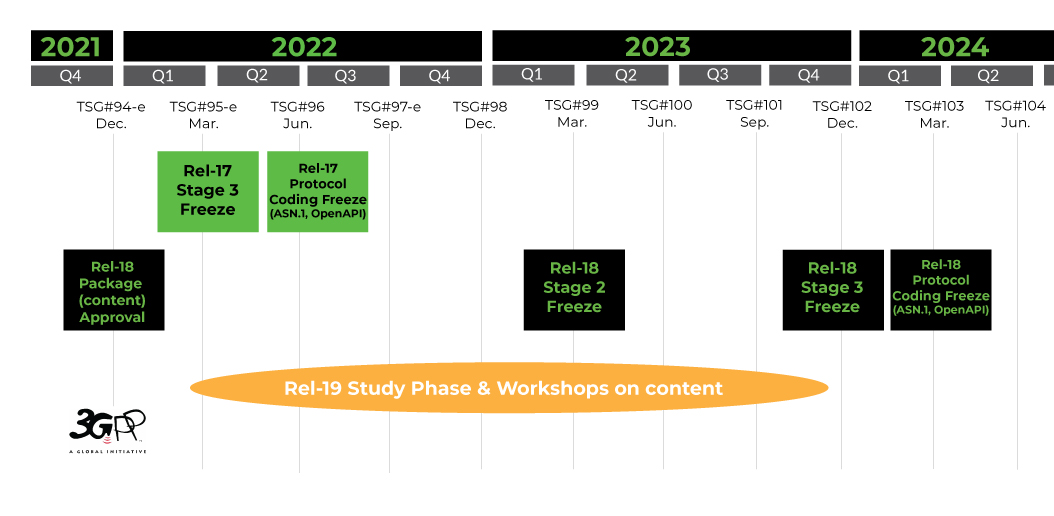

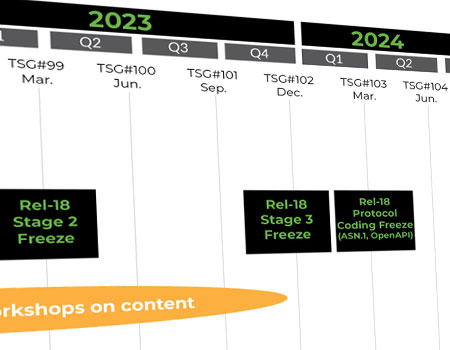
 3GPP News
3GPP News
